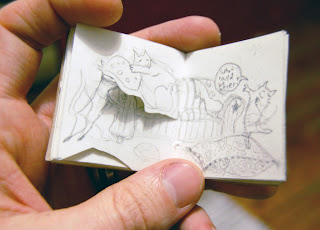extract from the Guardian
Feminist books for five-year-olds
Can you radicalise young children in a few easy reads? Viv Groskop gives it her best shot
It all started with my son, Will, stamping his feet and saying he didn't want any girls invited to his sixth birthday party. Girls, he declared, are boring. At the same time I noticed my daughter, Vera, who is three, carrying a handbag and lip gloss. Will was demanding his first football kit, Vera was swooning over princess paraphernalia, and I suddenly realised that it was time for a gender stereotyping intervention.
Children know what they are supposed to like from an early age. For girls, it's princesses, ballet, fairies, parties. For boys, it's adventure, space travel, fire engines, pirates. Until now, my two have been young enough to do their own thing – Will has enjoyed baking cakes, Vera has pretended to be Luke Skywalker. But the older they get, the harder it is to resist the pink-and-blue divide.
Can books redress the balance? We often read Captain Pugwash and Asterix – but there are no girls in those stories. I was happy with Babar until Celeste became pregnant with triplets and never came out of the nursery again. In Peepo the mother is always ironing. Of course, there are some successes for both boys and girls. Ludwig Bemelmans' Madeline is a wonderful tale of convent girl derring-do, with lots of boy characters, too. Julia Donaldson's books (The Gruffalo, The Smartest Giant in Town) are great fun, but not exactly politically inspiring. I wanted to find something feminist, subversive. The Female Eunuch for five-year-olds.
Bring on Jacinta Bunnell's colouring book Girls Are Not Chicks, published in the UK this week. The New York-based author first had the idea for feminist books for children when reading bedtime stories as a nanny. "I found myself editing the words so as not to pass on a sexist message," she says. "In most children's books the girls have pretty frocks and bows in their hair, so I would turn it around – call the boys by girls' names and vice versa."
In the US "anti-princess reading lists" have appeared, pioneered by the websites Mommytracked.com and Bitchmagazine.org. There are now books for three- to eight-year-olds with a specifically feminist agenda: Call me Madame President, Girls Think of Everything, Girls Will Be Boys Will Be Girls.
Feminist author Natasha Walter is intrigued but cautious. "My mother wouldn't buy me Enid Blyton because she said her books were too racist and sexist," she says. "But I don't think you need to read in a feminist way to become a feminist." With her own daughter she reads Catherine Storr's Clever Polly and the Stupid Wolf and Roald Dahl's Matilda. Both Walter and fellow feminist writer Susie Orbach pick Pippi Longstocking as one of the best reads for children.
So Pippi seems a good place to start. But can a three-year-old girl who wants to marry her daddy, and a six-year-old boy who hates pink, really be radicalised in just five easy reads? Time to find out . . .
Pippi Longstocking By Astrid Lindgren, illustrated by Lauren Child (£14.99, OUP)
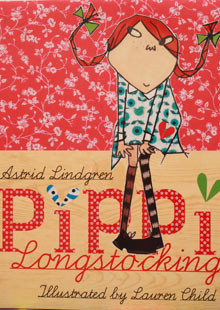 Pippi Longstocking, By Astrid Lindgren.
Pippi Longstocking, By Astrid Lindgren.
Pippi's mother dies on the first page and her father is lost at sea. Oh dear. But left to her own devices Pippi goes on adventures, tells tall stories and is superhumanly strong. Utterly magical – but a bit too sophisticated for my two. The story is long and there are very few pictures, although the children loved the Lauren Child illustrations.
Will: "It was rubbish. It's stupid. I like Mr Nilsson [Pippi's pet monkey] and the father who was washed overboard and the mother who is up in heaven. Actually, no, it's not rubbish. It's really funny."
Vera: "I think I loved it. It was beautiful. Pippi is beautiful."
Girls Are Not Chicks By Jacinta Bunnell and Julie Novak (£7.99, PM Press)
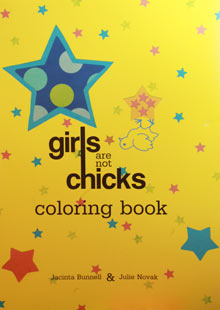 Girls Are Not Chicks, by Jacinta Bunnell and Julie Novak.
Girls Are Not Chicks, by Jacinta Bunnell and Julie Novak.
Some of the pictures and captions in this colouring book are funny. A woman riding a tractor: "Who says girls don't like to play in the dirt?" Two ballerinas dancing: "No one wants to fight the patriarchy alone. Make friends." But I'm not sure whether the messages are really for the amusement of children, or adults. One caption reads: "When she stopped chasing the dangling carrot of conventional femininity, she was finally able to savour being a woman." Try explaining that to a three-year-old.
Will: "This book is for girls."
Vera: (scribbles intently)
Princess Smartypants By Babette Cole (Puffin, £5.99)
 Princess Smartypants, by Babette Cole.
Princess Smartypants, by Babette Cole.
A riotously subversive read. "Princess Smartypants did not want to get married. She enjoyed being a Ms." Princess Smartypants keeps giant slugs as pets and challenges her geeky prince suitors to roller-disco marathons. When one of them finally wins her over, she kisses him, intentionally turning him into a toad. "When the other princes heard what had happened to Prince Swashbuckle, none of them wanted to marry Smartypants. So she lived happily ever after." Excellent. Although, interestingly, the children seriously struggled with the idea that anyone might not want to get married.
Will: "I liked it when the prince turned into a toad. It will be my most favourite story ever."
Vera: "I want Smartypants! I want Smartypants!"
The Pirate Girl By Cornelia Funke (Chicken House, £5.99)
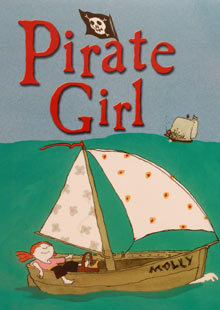 The Pirate Girl, by Cornelia Funke.
The Pirate Girl, by Cornelia Funke.
Molly is in her boat, sailing off on holiday to her granny's, when she is kidnapped by Captain Firebeard and his vicious band of pirates. But they chose the wrong girl. Molly's mother is Barbarous Bertha and when she comes to rescue her daughter she brings her own ferocious crew. Brilliant – although I worried slightly about the male pirates. At the end they are forced to polish Barbarous Bertha's boots 14 times a week. Punishing the oppressor is not true
feminism, it's just role reversal. Still, this was the most successful read and I would recommend it to anyone.
Will: "This was even better than Princess Smartypants. It's the best story in the whole world. Write this: I really like boats."
Vera: "My favourite [character] is Molly. And her mum."
Adventure Annie Goes to Work By Toni Buzzeo (Dial Books, £10.31 from Amazon)
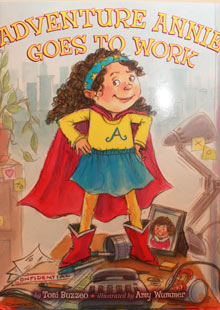 Adventure Annie Goes to Work, by Toni Buzzeo.
Adventure Annie Goes to Work, by Toni Buzzeo.
Adventure Annie dresses up every Saturday in her superhero costume and has adventures with her mother. But this Saturday her mother is called into work because an important document has gone missing. It's up to Adventure Annie to save the day and locate the folder under a pot plant. Yep, that really is the entire plot. The children were confused by the strange dearth of incident.
Will: "I hate it. I hate curly hair and Adventure Annie has curly hair. And I don't like her cape and her shoes because it's pink."
Vera: "I'll have the pink cape and the pink shoes. [Pause] I like Molly the pirate."
Verdict: You can't teach gender studies to small children in a day, but you can make a start. They have already demanded Pippi Longstocking and Pirate Girl again – and again. Lessons that they have learned? The existence of the term "Ms", which prompted a heated discussion. The idea that marriage is not everyone's idea of a fairytale ending. And that women wielding cutlasses are just as menacing as men – possibly more so. Overall, I think, Professor Greer would be proud.
http://www.guardian.co.uk/lifeandstyle/2009/dec/04/feminist-books-five-year-olds






























.JPG)






